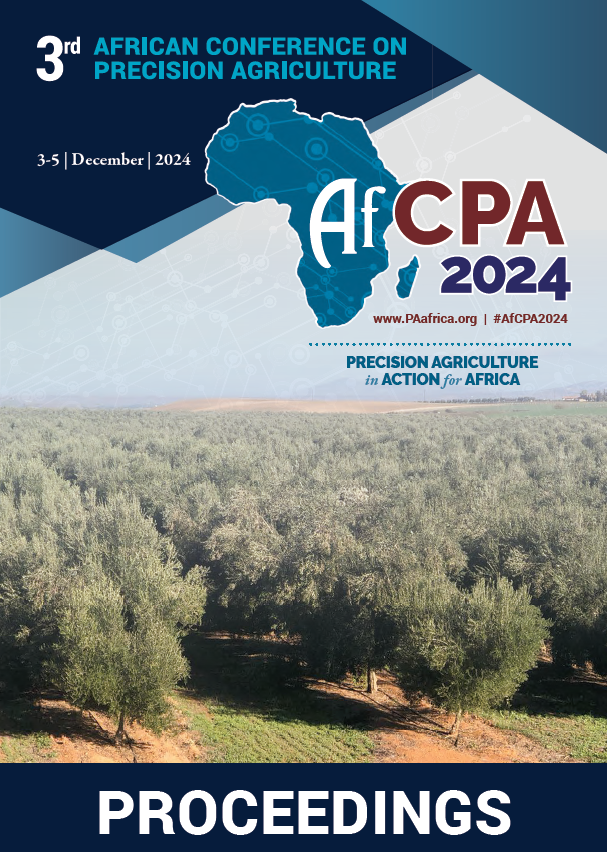Download the Conference Proceedings
Proceedings
Authors
| Filter results3 paper(s) found. |
|---|
1. FARMER CHARLIE: PRECISION AGRICULTURE AT SMALLHOLDER FARMERS’ SERVICEPreliminary research and an ongoing project in Nigeria showed that agriculture is a crucial activity in the country. It is mainly carried out in small, family-owned farms: in fact, 88% of Nigeria farmers work on less than 0.5 ha. Lack of resources, of readily available information and the impact of climate on agricultural activities lead to low yields and high-cost farm inputs (FAO, 2020). The availability of agricultural data and weather forecast information could play an essential role in improving... B. Bonnardel, G. Cursoli |
2. A review on Sensor based robotics agriculture: Improving traditional Agriculture PracticesAgribot could be a mechanism designed to reduce the labor of farmers by increasing the speed and accuracy of the work. Elementary functions concerned in farming i.e. plowing the sphere, sowing of seeds and covering the seeds with soil. Agribot is associate degree autonomous mechanism that provides the power for choices for offered techniques. Fruit Picker robots, autonomous tractor sprayers, this... S.C. Karad, G.U. Shinde, P. Kumar |
3. Determinants of the adoption of an intelligent monitoring system and effects on farms performance in TunisiaConcidering the observation of the rise of Computerized Management Software Packages and intelligent monitoring in a path of modernization of agricultural techniques, we questioned the main factors influencing the decision to adopt management software, farmers’ perception of these management tools and their impact on farm performance. Referring to a theoretical framework focused on innovation and the adoption of technologies in agriculture, we triggered the hypothesis of research... J. Ben nasr, H. Chiboub, M. Msaddak |
